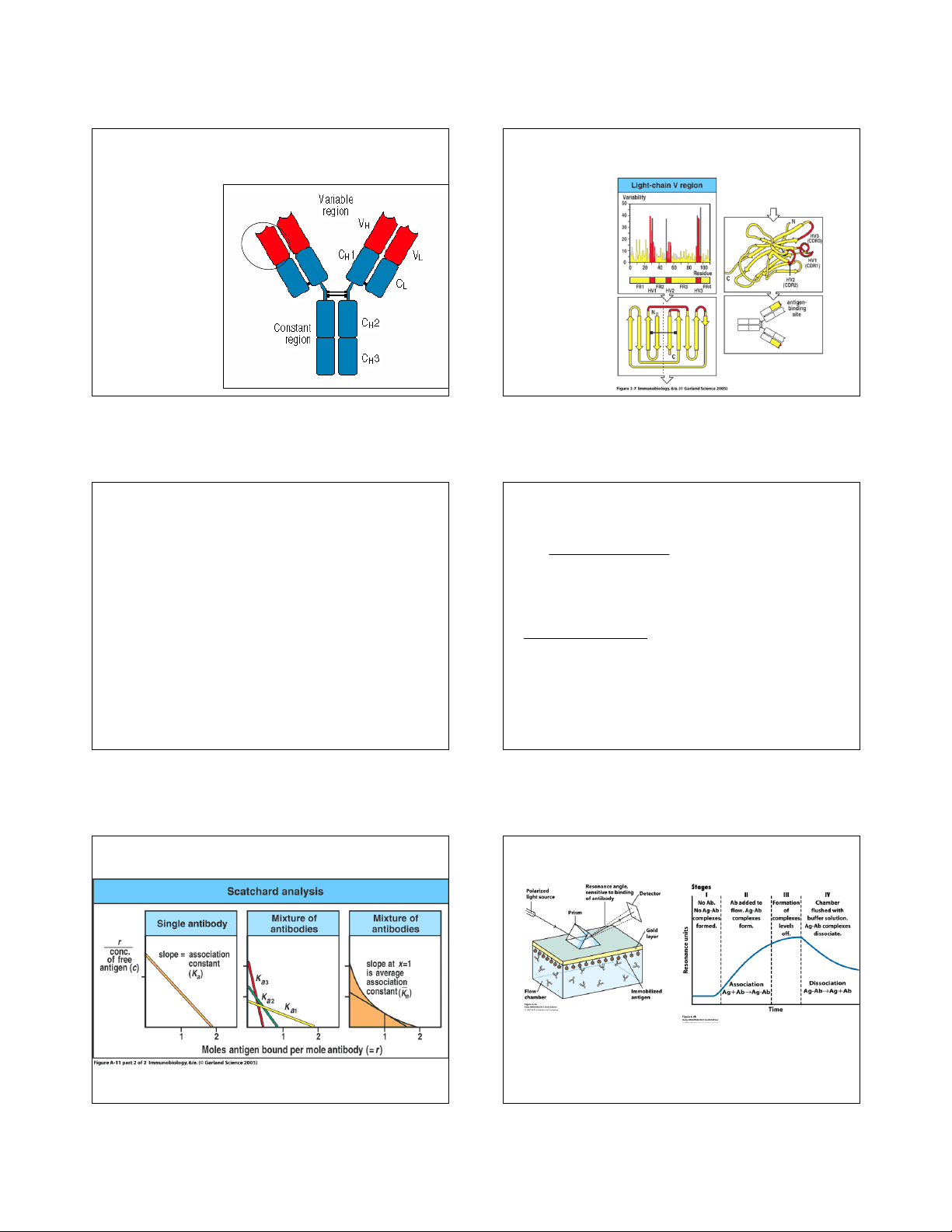
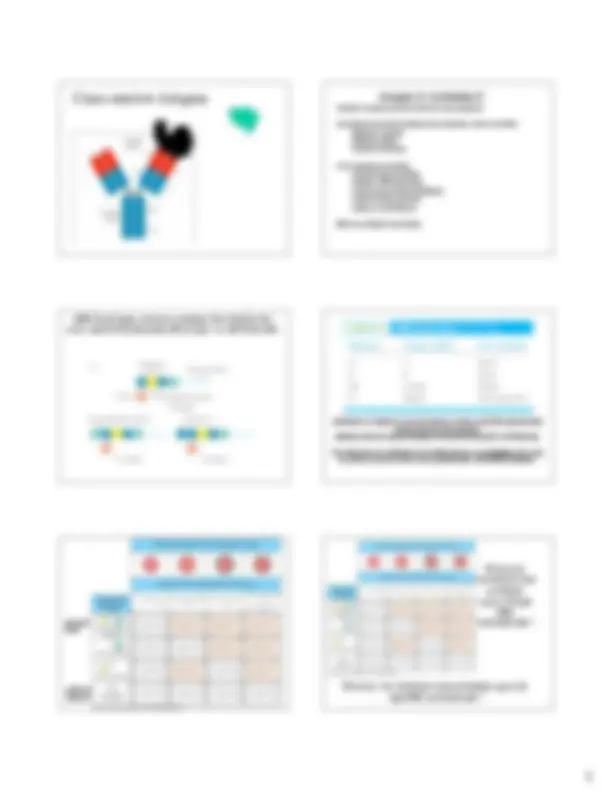

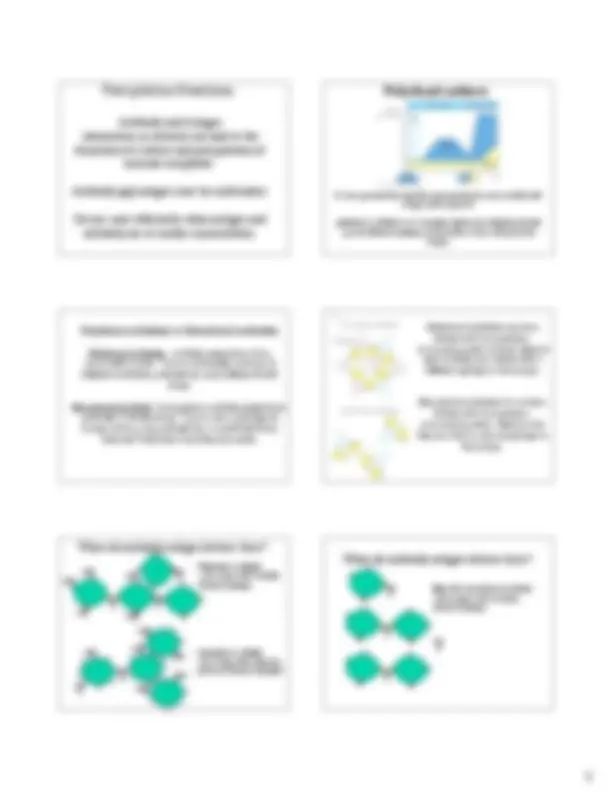
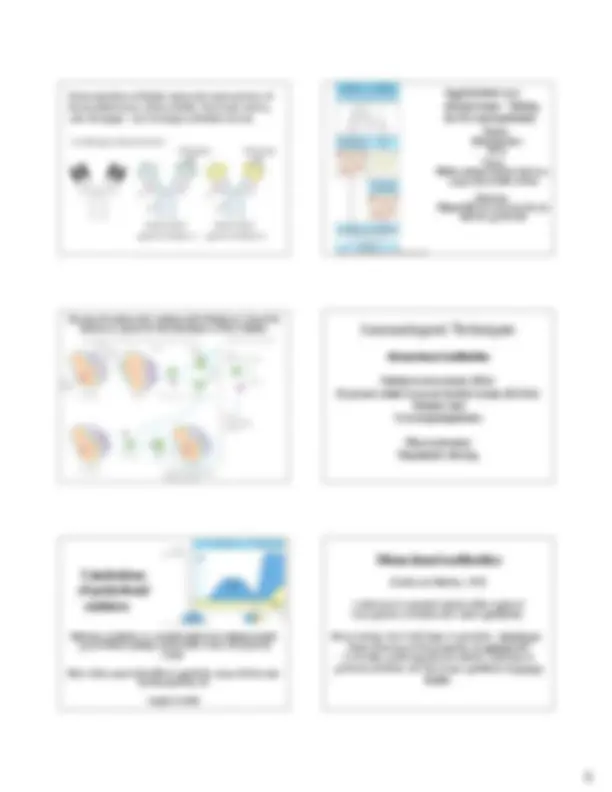
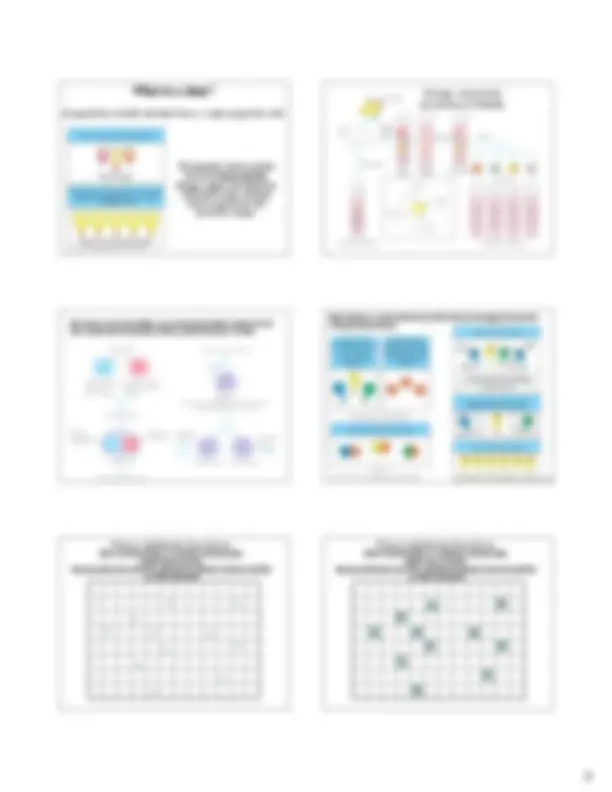



Study with the several resources on Docsity

Earn points by helping other students or get them with a premium plan


Prepare for your exams
Study with the several resources on Docsity

Earn points to download
Earn points by helping other students or get them with a premium plan
Community
Ask the community for help and clear up your study doubts
Discover the best universities in your country according to Docsity users
Free resources
Download our free guides on studying techniques, anxiety management strategies, and thesis advice from Docsity tutors
An in-depth analysis of antibody structure, antigen recognition, and the interactions between antibodies and antigens. Topics covered include the primary, secondary, quaternary, and tertiary structure of antibodies, the concept of affinity and avidity, equilibrium constants, cross-reactivity, and the use of polyclonal and monoclonal antibodies. The document also discusses the impact of multivalency on binding strength and the role of cross-reactivity in vaccine generation.
Typology: Study Guides, Projects, Research
1 / 10

This page cannot be seen from the preview
Don't miss anything!







A Brief Review of Antibody Structure A Brief Review of Antibody Structure Primary structure Secondary structure Quaternary structure Tertiary structure Antigens & Antibodies II Definitions A comparison of antigen recognition by B and T cells Factors that influence immunogenicity Quantitating the strength of antibody-antigen interactions Equilibrium constants equilibrium dialysis impact of multivalency Cross-reactivity of antibodies Measuring antibody-antigen binding Polyclonal antibodies vs Monoclonal antibodies
Affinity between two macromolecules can measured using a biosensor Technique: Surface Plasmon Resonance Instrument: Biocore
low affinity interactions can have high avidity if valence is high. IgM tend to bind tightly, but have less specificity. Avid binding due to high affinity. Binding of IgG tends to be more specific. (more perfect “fit” between antigen binding site and antigen)
Definitions and comparison of B and T cell antigen recognition Quantitating the strength of antibody-antigen interactions: affinity and avidity Equilibrium constants equilibrium dialysis impact of multivalency Cross-reactivity of antibodies Definition of cross-reactivity Example: ABO blood groups Cause of rheumatic fever (streptolysin) Useful for vaccine generation Problems for self-tolerance Measuring antibody-antigen binding
Definitions and comparison of B and T cell antigen recognition Quantitating the strength of antibody-antigen interactions: affinity and avidity Equilibrium constants equilibrium dialysis impact of multivalency Cross-reactivity of antibodies Definition of cross-reactivity Example: ABO blood groups Cause of rheumatic fever (streptolysin) Useful for vaccine generation Problems for self-tolerance Measuring antibody-antigen binding
Definitions and comparison of B and T cell antigen recognition Quantitating the strength of antibody-antigen interactions: affinity and avidity Equilibrium constants equilibrium dialysis Cross-reactivity of antibodies Measuring antibody-antigen binding lattice formation and precipitation reactions secondary antibodies: antibodies reactive with other antibodies medical tests based on antibody-antigen precipitation reactions A variety of different assays have been developed to detect antibody-antigen interactions. Some of these are based on the tendency of antibody- antigen complexes to come out of solution called “precipitation reaction”. Some are based on the ability of antibodies to stick cells together, called an “agglutination reaction”.
Can be generated by repeated immunization of animal (rabbit) with antigen (with adjuvant). polyclonal antibodies are a complex mixture of antibodies directed against different epitopes and that differ in their affinity for the antigen.
Polyclonal antibody and antigen with multiple Distinct epitopes monoclonal antibody and antigen with repeating pattern of identical epitopes
Not with monoclonal antibody and antigen with multiple distinct epitopes
Agglutination-based pregnancy test Antigens & Antibodies II Definitions and comparison of B and T cell antigen recognition Quantitating the strength of antibody-antigen interactions: affinity and avidity Equilibrium constants equilibrium dialysis Cross-reactivity of antibodies Measuring antibody-antigen binding lattice formation and precipitation reactions secondary antibodies: antibodies reactive with other antibodies medical tests based on antibody-antigen precipitation reactions Antibodies that bind to other antibodies (secondary antibodies) Immunize animal (rabbit) with purified antibodies from another species (human). The human Ig is the antigen, and the antibodies raised in the rabbit bind specifically to human Ig. These anti-human Ig (secondary antibodies) can be used to detect presence of human Ig. Use of anti-Ig antibodies increases degree of cross-linking and can increase lattice formation. human Ig Rabbit anti-human Ig antibody
Disease : Erythroblastosis fetalis Cause : Mother produces IgG that bind to an antigen (Rh) on RBC of fetus Detection : Expose RBC to anti-human Ab and look for agglutination Treatment of mothers with antibodies to Rh (RhoGam) at time of 1st
P olyclonal antibodies are a complex mixture of antibodies directed against different epitopes and that differ in their affinity for the antigen. Each antisera preparation differs in specificity, averge affinity, cross- reactive specificies, etc. Supply is limited.